Navigating Financial Uncertainty: Smart Ways to Access Your Home Equity
Understanding Your Home's Hidden Financial Safety Net
In today's unpredictable economic landscape, homeowners facing potential job loss possess a valuable financial resource beyond traditional savings: home equity. This asset—representing the difference between your property's current market value and your remaining mortgage balance—can serve as a crucial financial lifeline during periods of income uncertainty. Even homeowners who purchased property relatively recently may have accumulated substantial equity due to the robust appreciation in housing markets across many regions.
The critical factor in successfully utilizing this resource is timing. Financial institutions typically require proof of steady income when approving equity access products. Therefore, if you anticipate employment challenges on the horizon, exploring your options proactively becomes essential. Waiting until after a job loss significantly diminishes your ability to access this valuable financial cushion when you need it most.
Traditional Equity Access Methods: Weighing the Benefits and Drawbacks
When considering how to tap into your home's value, several conventional approaches exist, each with distinct advantages and potential pitfalls during financial uncertainty.
Second mortgages and home equity loans provide lump-sum access to your equity but introduce new monthly payment obligations—precisely what you should avoid when facing income disruption. As Allen Price of BSI Financial Services cautions, "Taking on additional debt during employment uncertainty can exacerbate financial stress, particularly if securing new employment takes six months or longer."
A home equity line of credit (HELOC) offers a more flexible alternative. This financial product establishes a predetermined credit line secured by your home's equity without requiring immediate withdrawal. The funds remain available when needed, functioning as a financial safety net. This approach allows homeowners with sufficient emergency savings to maintain their liquidity without immediately increasing their debt burden.
However, it's crucial to understand that once you begin drawing from a HELOC, monthly repayment obligations commence. This repayment requirement can create additional financial pressure during periods of reduced or eliminated income.
Shared Equity Agreements: A Modern Alternative
For homeowners seeking to avoid monthly repayment obligations during financial hardship, shared equity agreements present an innovative solution. These arrangements—also known as shared equity mortgages or equity participation agreements—function fundamentally differently from traditional loans.
With a shared equity agreement, an investment company provides immediate cash in exchange for a predetermined percentage of your home's future appreciation value. Despite the "mortgage" terminology, these agreements do not create conventional debt obligations requiring monthly payments.
These financial arrangements have gained popularity among homeowners who don't meet traditional lending criteria, though they remain accessible to any property owner with sufficient equity. While most commonly associated with down payment assistance for homebuyers, these agreements increasingly serve as financial stability tools for existing homeowners.
The defining characteristic of shared equity agreements is their deferred repayment structure. No payments—principal or interest—are required until you eventually sell your property or refinance your primary mortgage. At that future point, you repay the investor's initial contribution plus their contractually specified percentage of your property's appreciated value.
How Shared Equity Agreements Work in Practice
To illustrate the mechanics of a shared equity agreement, consider this simplified scenario:
An investor provides $50,000 cash today in exchange for 25% of your property's future appreciation. Several years later, when selling your home, you discover it has appreciated by $100,000. At this point, you would owe the investor $75,000—their original $50,000 investment plus 25% of the $100,000 appreciation ($25,000).
This financing approach isn't a fringe market segment. According to industry insiders, the four largest investment firms in this space executed $2 billion in shared equity agreements last year, with projections suggesting double that volume this year.
Several reputable companies operate in this growing financial sector:
- Hometap: Operating across 18 states, this firm invests up to $600,000 per property. While they require a minimum credit score of 500, they implement no income requirements. Their agreements include varied equity percentages based on your anticipated homeownership duration, with contract terms extending up to 10 years. Importantly, Hometap participates in potential property value decreases, sharing in any losses.
- Unlock: Similar to Hometap, Unlock shares in potential property depreciation while uniquely offering partial buyout options. They maintain a 500 minimum credit score requirement, provide investments up to $500,000, and structure 10-year agreements across 17 states.
- Point: This company offers extended 30-year investment terms across 27 states, providing greater flexibility for long-term homeowners.
Determining Your Equity Access Potential
To maximize your available funds through shared equity agreements, requesting quotes from multiple providers is recommended. While specific calculations vary between companies, several factors consistently influence your borrowing capacity:
- Current property value: Professional appraisals determine your home's present market value
- Remaining mortgage balance: Your outstanding loan amount affects available equity
- Equity percentage: Most companies require homeowners to maintain at least 20% equity after the agreement
- Agreement duration: Longer terms typically enable access to larger funding amounts
Insights: Common Questions About Equity Access
Is accessing home equity advisable during job uncertainty?
When approached strategically before income loss occurs, equity access can provide crucial financial stability. However, options that create immediate repayment obligations should be avoided in favor of more flexible alternatives like HELOCs (when established before job loss) or shared equity agreements.
How do shared equity agreements differ from traditional loans?
Unlike conventional mortgage products, shared equity agreements don't require monthly payments. Instead, repayment occurs only when you sell your property or refinance your mortgage, making them particularly suitable during income interruption.
What happens if my property value decreases with a shared equity agreement?
Many shared equity companies participate in both appreciation and depreciation. This means if your property loses value, the investor absorbs a proportionate share of that loss, reducing your repayment obligation compared to traditional debt instruments.
Can I access home equity with poor credit?
Traditional equity loans and HELOCs typically require good credit scores. However, shared equity agreements often accommodate lower credit profiles, with some companies accepting scores as low as 500, making them accessible to homeowners with imperfect credit histories.
How quickly can I access funds through these options?
Traditional equity loans typically take 30-45 days for approval and funding. HELOCs follow similar timelines. Shared equity agreements often process more quickly, potentially providing funds within 2-3 weeks, though timelines vary by provider and property location.
In challenging economic periods, homeowners benefit from understanding all available financial resources. Your home's equity represents not just your largest asset but potentially your most flexible financial safety net when approached with careful planning and strategic timing.













